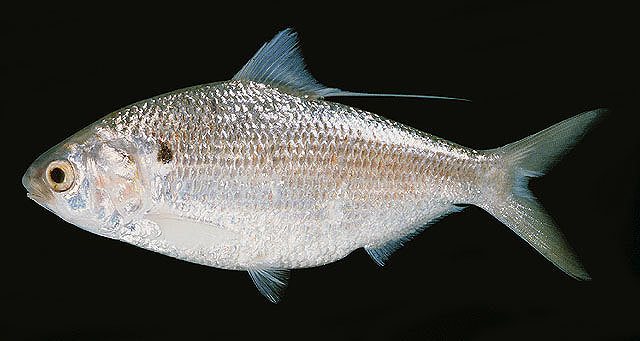| Clupeidae (Herrings, shads, sardines, menhadens), subfamily: Dorosomatinae |
| 22 cm TL (male/unsexed) |
|
pelagic-neritic; depth range 0 - 30 m, anadromous |
| Indo-West Pacific: Gulf of Aden north to the Persian Gulf, then eastward to the Andaman Sea, South China Sea and the Philippines, and north to southern tip of Korea. Single record from South Africa (Ref. 3259). |
|
Dorsal spines (total): 0-0; Dorsal soft rays (total): 15-19; Anal spines: 0-0; Anal soft rays: 17-26. Dark bluish dorsally, silvery below (Ref. 3259). A dark spot behind gill opening. Belly with 17 to 20 (usually 18) + 9 to 13 (usually 11), total 28 to 32 (usually 30) scutes. Anterior arm of pre-operculum with the third infra-orbital bone immediately above it, no fleshy gap between; lower jaw strongly flared outward. Pectoral axillary scale present; hind edge of scales distinctly toothed. |
| Known from estuaries and coastal areas, occasionally ascending into the upper reaches of the tidal zone (Ref. 12693). A filter-feeder. Marketed fresh, dried-salted or boiled. Made into fish balls. Very bony. |
|
(Ref. 96402)
|
| harmless |
|
Source and more info: www.fishbase.org. For personal, classroom, and other internal use only. Not for publication.
Page created by Jen, 05.08.02,
php script by kbanasihan 06/09/2010 ,
last modified by
dsantos, 20/08/10

